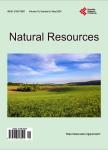Conditions for Thermal Activation of Ngwo Clay as an Alternative Resource for Alumina
Conditions for Thermal Activation of Ngwo Clay as an Alternative Resource for Alumina作者机构:Department of Materials and Metallurgical Engineering Federal University of Technology Owerri Nigeria
出 版 物:《Natural Resources》 (自然资源(英文))
年 卷 期:2019年第10卷第1期
页 面:1-15页
学科分类:1002[医学-临床医学] 100214[医学-肿瘤学] 10[医学]
主 题:Ngwo Clay Bauxite Kaolinite Alumina Calcination Thermal Activation Leaching
摘 要:The thermal activation of Ngwo clay from southeastern Nigeria for optimal leaching of alumina was investigated. The clay assayed 24.63% Al2O3 and 52.15% SiO2, comprising mainly kaolinite mineral and free silica or quartz. The alumina locked up in the clay structure was rendered acid-soluble by thermal activation which transformed the clay from its crystalline nature to an amorphous, porous phase or metakaolinite. The clay samples were heated at calcination temperatures of 500°C, 600°C, 700°C, 800°C, and 900°C at holding times of 30, 60, and 90 minutes. Uncalcined clay samples and samples calcined at 1000°C (holding for 60 minutes) were used in the control experiments. After leaching the resulting clay calcines in 1 M hydrochloric acid solution at room temperature, it was observed that the clay calcines produced at 700°C (holding for 60 minutes) responded most to leaching. Samples calcined for 60 minutes also responded better than those held for 30 or 90 minutes. Based on activation energy studies, it was observed that calcines produced at 700°C (for 60 minutes) had both the highest leaching response (51.84%?after 1 hour at leaching temperature of 100°C) and the lowest activation energy of 25.03 kJ/mol. It is concluded therefore that Ngwo kaolinite clay should?be best calcined for alumina dissolution by heating up to 700°C and holding for 60 minutes at that temperature. The clay deposit has potential for use as alternative resource for alumina production in Nigeria where bauxite is scarce.



